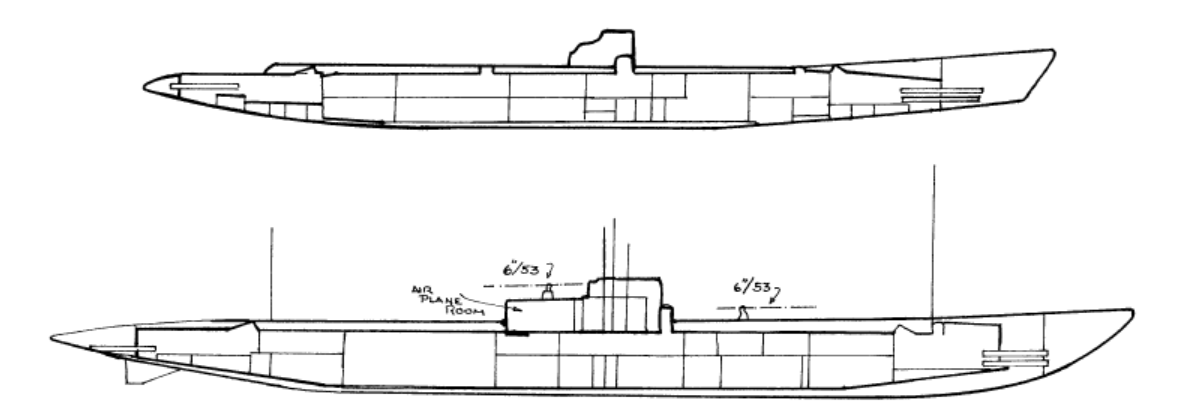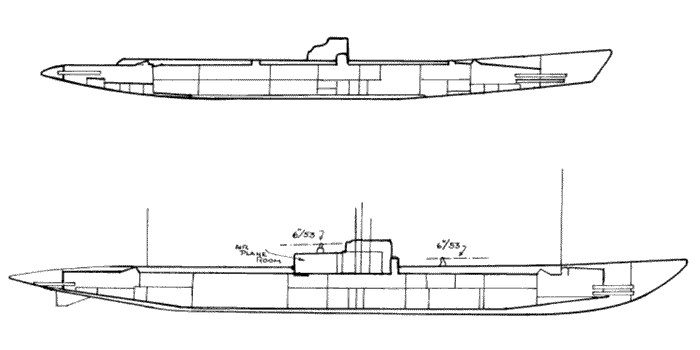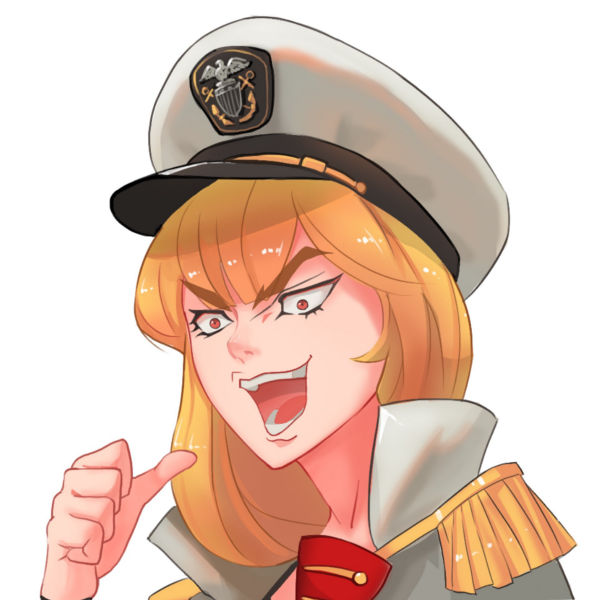WHAT. WERE YOU EXPECTING TAUTOG TO COVER MY NAMESAKE? HAHAHAHAHAHA! DREAM ON! IF THERE’S ONE SUB CORNER I SHOULD TAKE, IT’LL BE THIS ONE!

Sarge! That’s V-7. Your namesake was V-7. V5 and V6 are Narwhal and Nautilus…
I-IS THAT SO?
*Ahem* Afraid so.
Well, cripes. SO DO I DO THIS SUB CORNER OR NOT?
Since you’re here and all, why not…
Alright! So. Listen up. Where we last left off, we were just talking about the Argonaut’s teething troubles. Big submarines are tough to make! They’re also expensive and really, really, really unwieldy.
Without getting too much into the Narwhal and Nautilus, I’m just gonna say, those boats weren’t very good. As shipgirls they’re excellent! As actual submarines? Well, let’s just say the downsides turned out to be HUGE blessings in disguise. But! But but but! For now? They weren’t popular.
The year is now 1928. Mickey Mouse just appeared on the big screen, Charles Lindbergh got his Medal of Honor, and the Japs just started up chaos up in Manchuria. In Congress? We’re busy yelling at each other.
See, one of the previous sub corners, Tautog’s talked about the V-program, right? Well, it’s now eight years later! Time to deliver results. What actually happened was that the General Board wanted to stick to the plan, and the submariners said no. If the Board would have had its way, we would have built two more Argonauts and a sub cruiser, giving us three big minelayers, three cruiser submarines, and three faster fleet submarines.
The submariners said, well, that’s well and good, but these boats take forever to build! The big submarines weren’t easy to operate either. Why don’t we make something smaller? Something that we can make faster and something that’ll be easy to make?
That something was called the U-135. Now, depending on who you read and how much they slobber over GERMAN SCIENCE, you’re gonna get people arguing different things. The general gist of a popular argument is that the US really liked what they saw in the U-135. So, this new design should be small. About 1250 tons, going 16 knots on the surface and 8 submerged. It’ll be armed modestly with a single deck gun and six torpedo tubes (for twelve torpedoes total). The guy pushing for it even hunted down old U-boat commanders trying to sell the idea that we need to be more like the Germans.
Yeah, yeah. Back in the 20s some people, particularly the submariners, had this idea that the general quality of US machinery was inferior to that of Europe. They’re always pushing for buying of _______ (like engines and parts) from the (INSERT EUROPEAN POWER HERE).
We said no. We’re gonna buy American and make things American. That basically put an end to that conversation, and we put the pencil-pushers to work. They ended up spending a good three or four months figuring out the design.
Now, here’s the thing. The submariners had the right idea. Smaller, more agile submarines indeed worked out pretty good in the Pacific War, but that’s only because we managed to patch up all the troubles with something like the U-135. For starters, small subs means less space. If we’re gonna make a powerful engine, where the hell’s that supposed to fit?
Let’s think about actual living conditions, too. The U-135 had no space for stores. You think you gonna like Eintopf every meal? We’re going to need to add things like coolers and storage to match. Here, the “coolers” aren’t just for food. Rather, it’s to make sure that your oil can work in the relatively hot waters of the Pacific. Given the increasing emphasis on damage control and manpower, we’re going to have to have more berthing space. The submarine has to have room within itself in case of attack. It’s going to need more of everything, torpedoes included.
After about six months of back and forth, we hammered out something fairly okay. Here’s what it looked like. These are a couple of sketches I dug out. The bottom is a revision of the top.

Right off the bat, one big difference. The conning tower is tiny. It’s also arranged pretty differently. The engines are in a separate room, and the direct-drive diesel (1750 BHP) are in the big aft space reserved for machinery (it’s the biggest rectangle on the sketch). The crew would be placed immediately abaft the forward torpedo room, the officers would be abaft the control room, and it’d go about as fast as the other big cruisers.
To make this work, they had to remove a lot of gun ammo. This one had only 100 rounds for its smaller gun, and the pressure hull plating was much weaker to compensate for its size. Also, due to its size, it could only stay out for 75 days rather than 90. Still fairly impressive, but all of these would become issues when this finally became V-7, or the Dolphin.
Yes. This one looked great on paper. It was basically the sort of “mass-produced” submarine that the submariners had wanted. It was about 1500 tons, can go out for 12,000 nm (which, if you recall! That’s what Tautog said would be good for a long patrol in the Pacific), carried a big load of torpedoes (18 in total, in six tubes), and went fairly okay at about 14 knots.
Well, the thing they ended up building could only do 10 knots for 11,000 nm, but that’s alright. The experience was what mattered. This particular prototype had incorporated a lot of the concepts found in the larger cruisers such as the deck shape and the composite drive propulsion system. It also freaked the British out, since we’d just proven it to them that the Dolphin could be a functional and powerful submarine design with a comparatively small tonnage use. They did, after all, try to propose submarines be no bigger than 1800 tons, after all!
Anyways. That’s how the Dolphin came to be. How did it do?
Bad.
The design had the right ideas, but the actual performance of the ship was pretty terrible. You-know-who commented that it was a deathtrap of a boat. He’s not wrong. Despite having been built in 1932, its machinery was really bad. Oil leaks and all kinds of leaks everywhere. Parts were unreliable. Stuff just didn’t work. It was quickly tossed over to training, as the Dolphin only actually saw three war patrols during her lifetime in the Pacific War.
Still. In case you haven’t been paying attention, much like the Argonaut or even the ones that showed up earlier, we learned a lot from it. The great submarine designs like the Gato or the Balao or the Tench? All that had all of these curious ones to thank for. In this case, the Dolphin would be the last submarine before the London Naval Treaty in 1930, and it’ll always have a spot in U.S. submarine history as the first working example of the “smaller” submarines that we’d eventually head towards.


